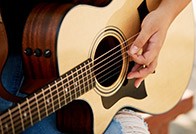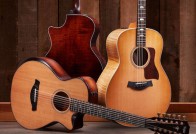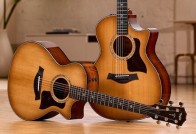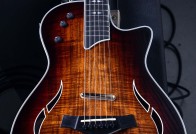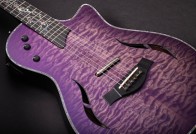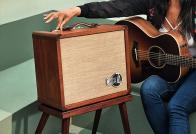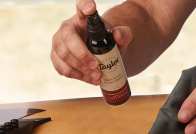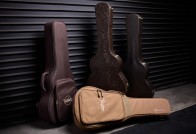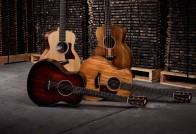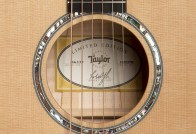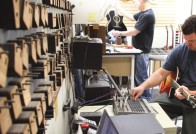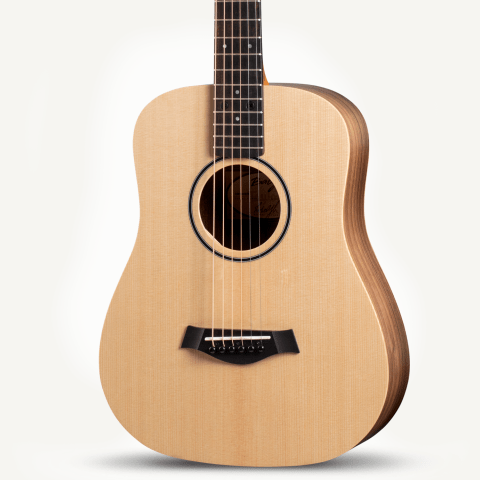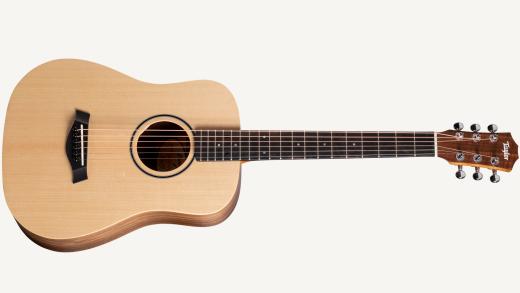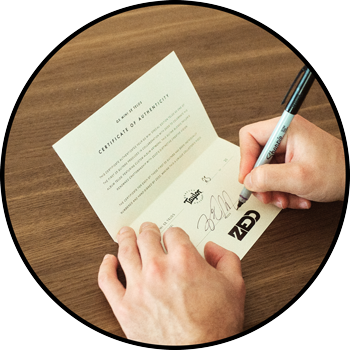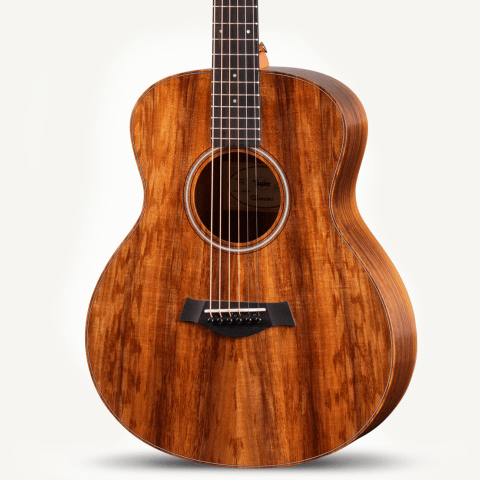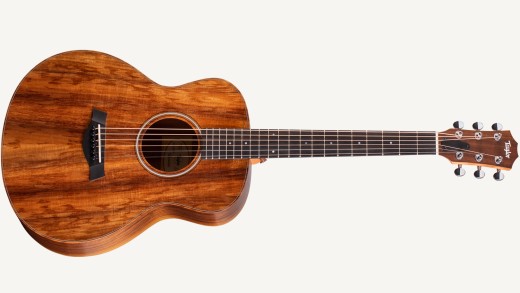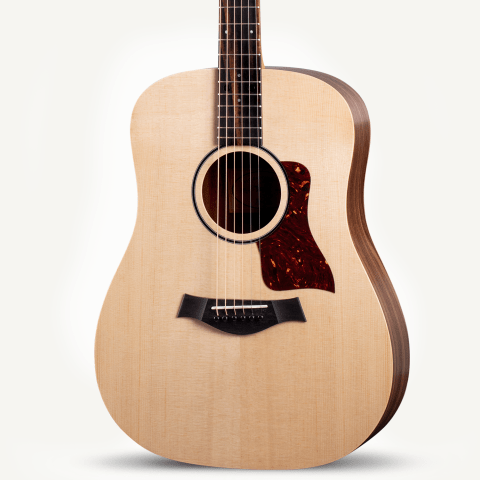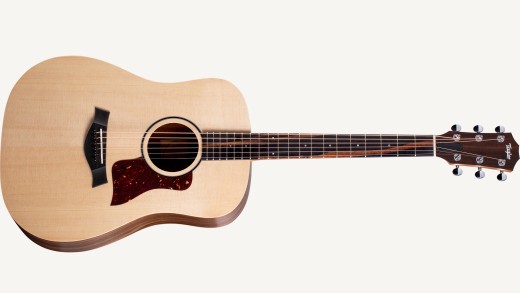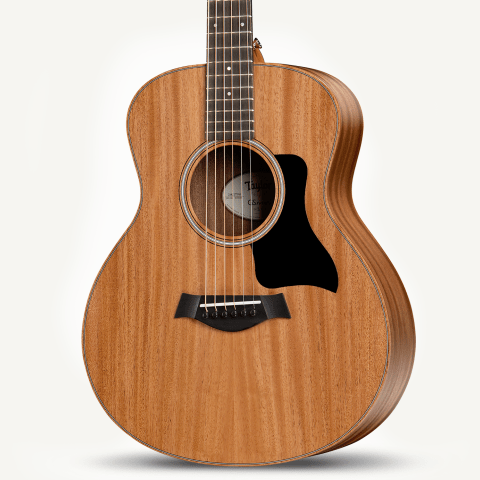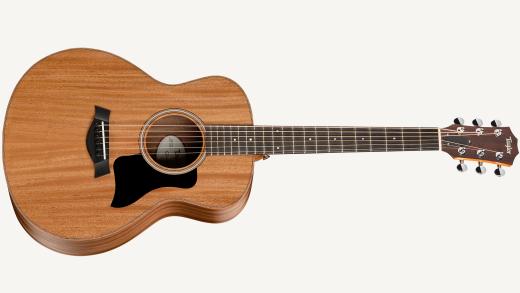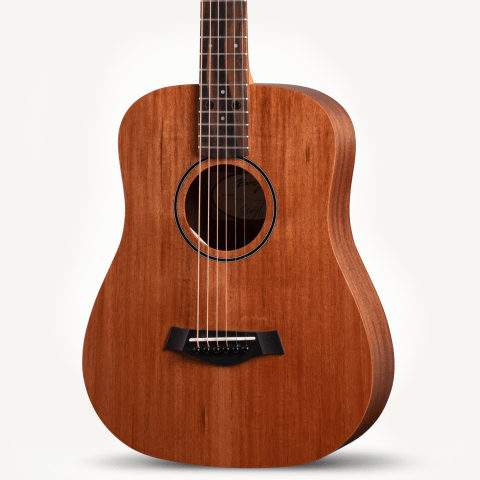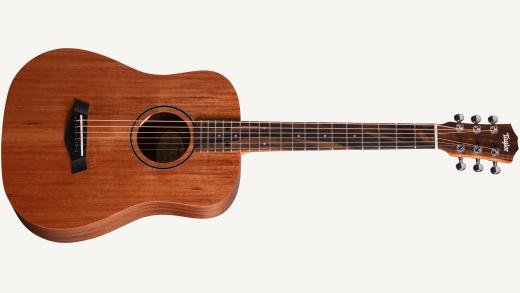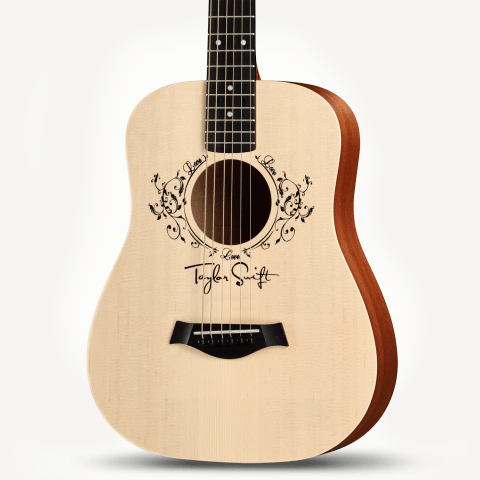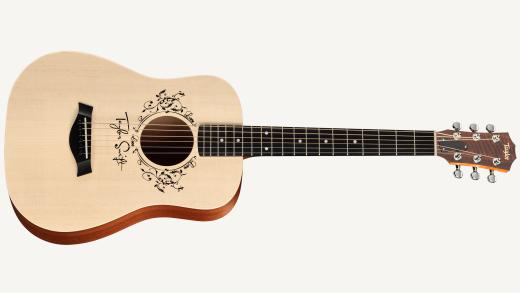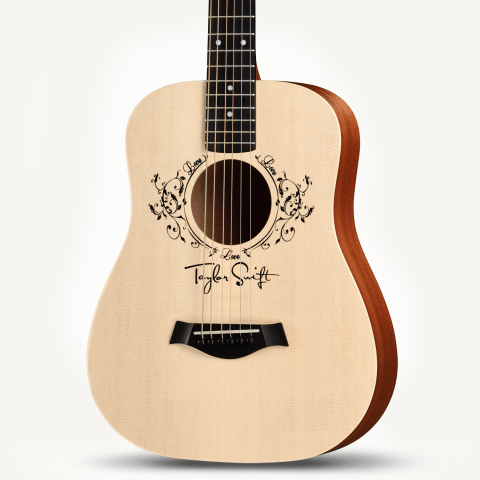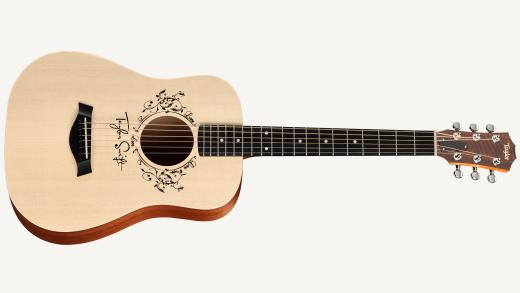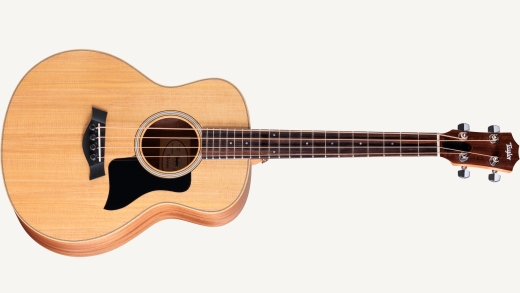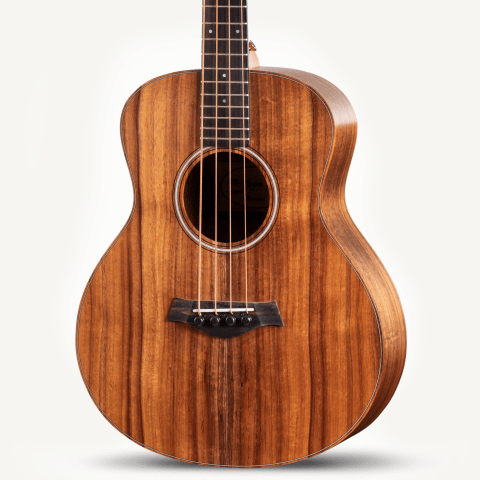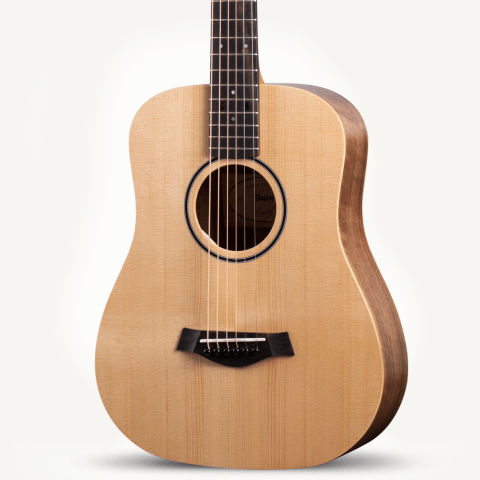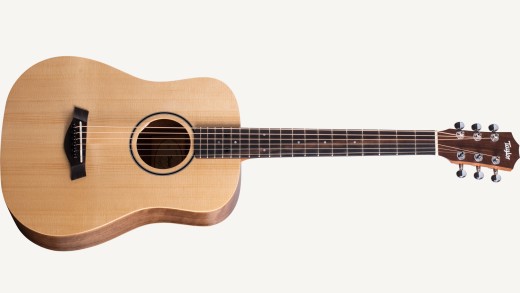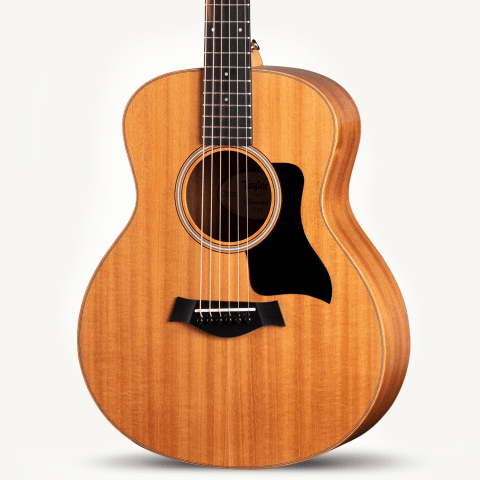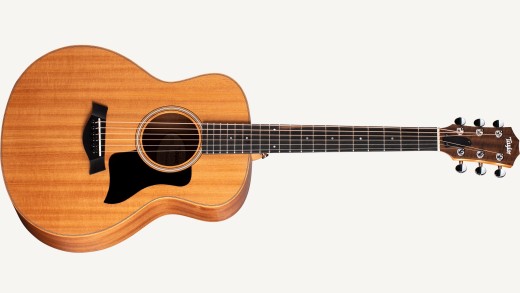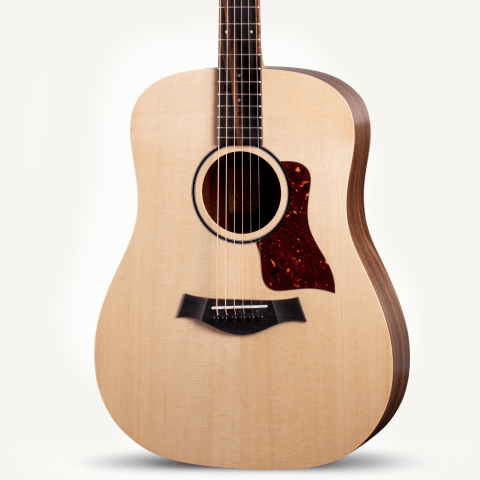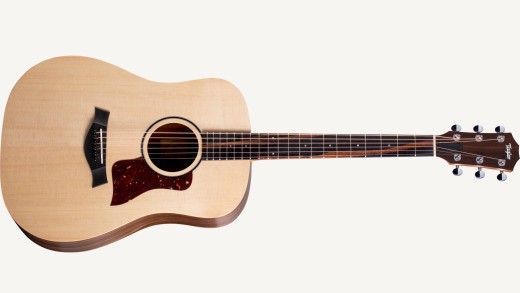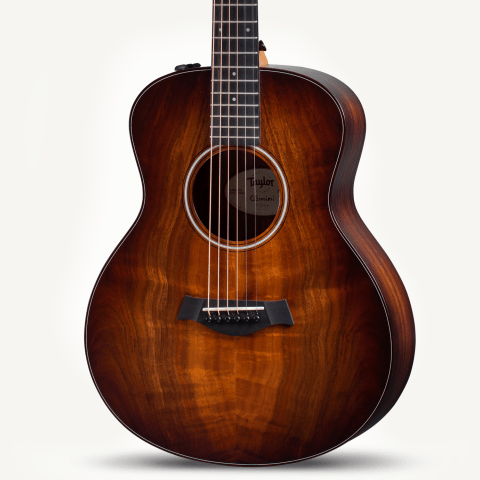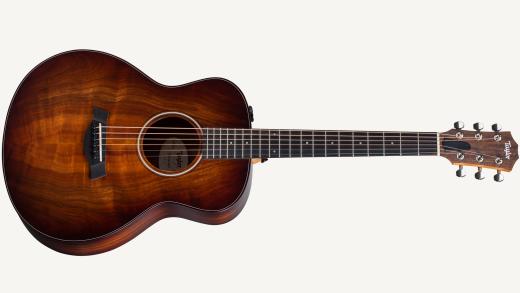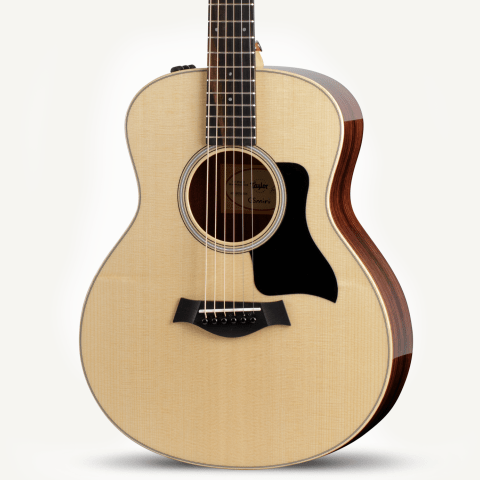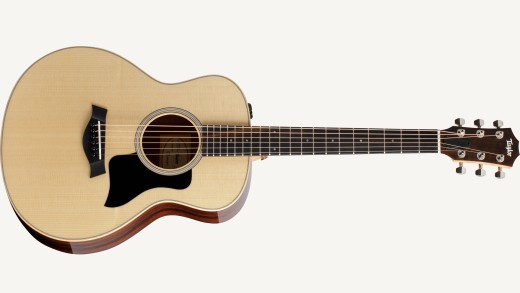
Built for convenience, portability and playing comfort, Taylor’s small-body acoustic guitars pack a serious musical punch into a fun-sized frame. Perfect for the new learner or young player in need of an accommodating guitar that will encourage regular practice and play, these guitars are also ideal for hitting the road thanks to compact designs that can easily fit into cars and airplane storage compartments. Yet despite their smaller dimensions, these guitars don’t sacrifice on the Taylor tone you love—every model is built with a solid-wood top, and some (like our U.S.-made GT guitars) feature all-solid tonewoods. Whichever size and shape you choose, expect a clear, bold and well-balanced voice that can perform across styles and genres, with a hand-friendly feel that makes each guitar as playable as it is portable.
Keep reading to learn about travel-size and small-body guitars from the Baby and Big Baby Series, or the super-popular GS Mini Series.
Featured Small Body/Travel Guitars
What is a travel guitar?
“Travel guitar” can refer to a range of instruments, usually acoustic guitars, that are designed to be more portable than standard-sized guitars. There is no official size or scale length that makes a guitar a travel guitar, and few guitars are actually named “travel guitars,” so it’s not a hard and fast distinction. While there are electric guitars available that are designed to be portable, most players prefer acoustic guitars for travel because electric guitars require an amp, making them less portable by nature.
That said, the primary factor that makes a guitar a travel guitar is its size. Most players looking for an instrument for traveling purposes will choose an acoustic guitar with smaller dimensions such as a shorter scale length and a smaller or narrower body. Smaller guitars are typically easier to fit into the trunk of a car, a storage compartment on a bus or train, or an overhead bin in an airplane. Remember to always check your airline’s policies on musical instrument handling before you fly with your guitar.
What are some popular travel guitars?
Many guitar manufacturers make acoustic guitars that are suitable for travel. The Taylor line has several options for players seeking an acoustic guitar that’s convenient for travel, starting with the Baby Taylor. One of the first three-quarter-size guitars ever introduced to the mainstream market, the Baby Taylor boasts an extremely compact body with a shorter scale length that makes it easy to take on the road or in the air.
The Baby Taylor is available in several different model variations. The original model, the BT1, features a solid spruce top that yields a clear, musical sound. The BT2 sports a solid mahogany top, while the BT-Koa includes a solid Hawaiian koa top. The mahogany variety will produce a bit darker voice with a more woody midrange presence than the spruce version, while the koa model will share that midrange character but with a touch of extra treble shimmer. Finally, we offer the Taylor Swift Baby Taylor (TSBT), which features a custom design on the spruce top that includes the singer-songwriter’s signature. We also offer the Big Baby Taylor, which is closer to a full-size guitar but with a slightly smaller, shallower body that offers easy portability.
Many players like having the option to plug in their acoustic travel guitars, and there are several acoustic-electric guitars in the Taylor line that are great for travel. The BT1e and TSBTe both include our ES-B electronics, which also boast an onboard digital tuner.
Other great choices for travel guitars include the popular Taylor GS Mini, which is available in an array of tonewood options and aesthetic varieties. One of the best-selling acoustic guitars in the world, the GS Mini is smaller than a traditional guitar but larger than three-quarter-size models like the Baby Taylor, offering a playing experience and sound closer to that of a full-size guitar while still offering the portability of a travel guitar. With solid-wood tops and other design elements that optimize resonance, volume and sustain, the GS Mini yields a rich, full tone that’s useful in live performance and recording scenarios. It’s also available as an acoustic-electric guitar, and we offer Plus models with enhanced visual appointments like glossy finishes. The GS Mini Series also includes the GS Mini Bass, a super-portable acoustic bass guitar unlike anything else on the acoustic market. For players looking to add some low-end sound to their music, the GS Mini Bass guitar is an ideal choice that doesn’t take up nearly as much space as a standard acoustic bass guitar.
Do travel guitars sound different?
The way an acoustic guitar or acoustic-electric guitar sounds is a result of all the elements of its construction—the types of wood used, whether those woods are solid or layered, the size of the air chamber inside the body, the curves of the body, the interior bracing and other factors all contribute to its tone.
Acoustic travel guitars will sound slightly different from full-size acoustic guitars because they generally have smaller bodies with a lower air capacity in the body. That means a travel guitar will usually produce a bit less volume and projection than a standard acoustic guitar. For most players, this isn’t a problem—in fact, it can be a benefit, since in many cases, players will use travel guitars to practice in places like hotel rooms, where too much sound can be disruptive.
As is the case with standard acoustic guitars, it’s important to look for certain qualities in a travel guitar that will optimize its sound. In particular, a solid-wood top is an essential feature of any acoustic guitar, travel-sized or otherwise, because the top is generally responsible for most of the guitar’s resonance and projection. All Taylor travel guitars, including the Baby Taylor and GS Mini, are crafted with solid tops.
Are travel guitars hard to play?
Whether a guitar is hard to play or not is a function of its construction, in particular the shape of its neck, the size of the body, and the action (the distance between the strings and the fretboard). Cheaper guitars may have necks or action that makes them more difficult to play—it’s one reason we always recommend players try to buy a quality guitar for their first instrument. You don’t want to be fighting against the guitar when you’re trying to learn.
Since travel guitars usually have smaller bodies and shorter scale lengths, they’re likely to at minimum be comfortable to hold in your lap while you practice. Taylor guitars are famous for their comfortable, easy-playing necks. Note that you’ll want to get a guitar strap if you plan on playing standing up.
Do travel guitars need different strings?
No, travel guitars generally use the same strings as full-size guitars—you’ll just end up with a bit more extra string at the tuning peg when you string it up, which you can just cut off like you would with a standard guitar. It’s possible that some travel guitars may be easier to play with a lighter-gauge string—check with the manufacturer for their recommendation. The Baby Taylor comes with light-gauge strings (.012 - .053), while the GS Mini comes with medium-gauge strings (.013 - .056).
What accessories should I buy with an acoustic travel guitar?
The most important accessory for a travel guitar is a good gig bag or guitar case that will protect your instrument from damage. Since you’re likely to be carrying your travel guitar with you and taking it in cars, buses, trains or airplanes, you’ll want something with some padding to ensure it’s not damaged in transit. Taylor travel guitars come with padded gig bags or an AeroCase, which offers much of the protection of a hardshell guitar case at one-third the weight. However, some manufacturers do not include guitar protection with their instruments, so you may have to buy a gig bag or case separately.
Other useful accessories for travel guitars include a digital tuner, a case humidifier to keep your guitar from drying out when you travel between climates, extra strings and a string winder, guitar picks, a guitar strap, and maybe a capo if you like to be able to change keys on the fly.




